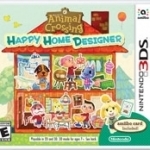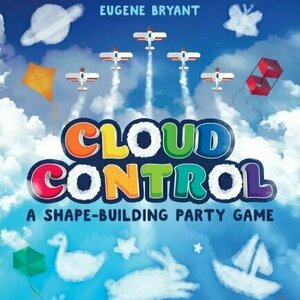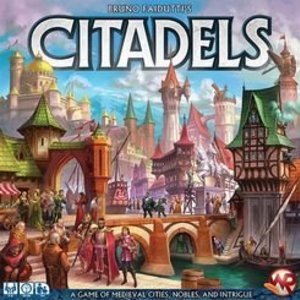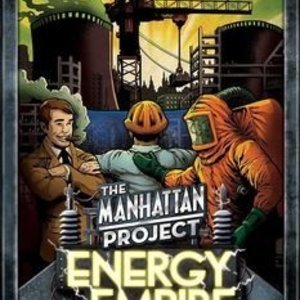
Better Homes and Gardens Magazine
Lifestyle and Magazines & Newspapers
App
Better Homes and Gardens is America’s most trusted magazine. BHG stimulates creativity, delivers...
Mothergamer (1607 KP) rated Animal Crossing: Happy Home Designer in Video Games
Apr 3, 2019
Oh, a cute little cafe design!
You can also decorate the outside of a client's house, choosing a variety of roof colors, house colors, and items for their yard like gardens and swings. You can also revisit clients and do things like a house upgrade or even redecorate their home for them. Another cool thing is the Happy Home Network. You can upload any house or building you've designed and you can visit other people's homes and rate them. You can take pictures of your designs and post them to social media as well showing off your creative skills which is pretty neat too.
You can design an awesome yard for your clients.
There are also themed contests via the Happy Home network such as a candy house or a Halloween house. There are also Amiibo cards which look like Pokemon trading cards and they work exactly the same way that the Amiibo figures do without all that extra bulk. The Amiibo cards work exclusively with the New 3DS and New 3DS XL. If you want to use them with the old 3DS, 3DS XL, and 2DS you can use the NFC Reader/Writer accessory.
After you've designed a couple of homes, you'll get the whole introduction to the Amiibo cards and how to use them as well as having an Amiibo phone in the Nook's Homes office. You'll be prompted to use an Amiibo card and when you do you'll be sent to the client's home where you can design to your heart's content. Each Amiibo card has different characters that you can design for. Another cool feature with these is if you have friends who have Amiibo cards, you can share furniture simply by visiting a client by tapping the Amiibo card to your friend's screen and if you do it twice the character will remember all their furniture. It's a fun way to socialize and get more items for your designs.
A forest of books!
I do wish you had your own house to decorate as all the designing only happens in town or in a client's home. That's not a big deal though because you can design the buildings any way you want and I put a lot of my own personal touches in things like the school and a concert hall. There's also lots to choose from with the designs and items making for a unique and entertaining experience. This is all about creativity and just having a good time with it. I'm still playing the game, trying out all these different things as well as checking out other people's awesome designs. Animal Crossing: Happy Home Designer overall is a great game full of endless fun.
Purple Phoenix Games (2266 KP) rated Cloud Control in Tabletop Games
Dec 31, 2020
Cloud Control is a 3-10 player party game of building unique cloud shapes from cues on cards. By manipulating basic cloud shapes players must get their opponents to guess what they are building to score VP kites.
DISCLAIMER: We were provided a copy of this game for the purposes of this review. This is a retail copy of the game, so what you see in these photos is exactly what would be received in your box. I do not intend to cover every single rule included in the rulebook, but will describe the overall game flow and major rule set so that our readers may get a sense of how the game plays. For more in depth rules, you may purchase a copy online or from your FLGS. -T
To setup shuffle the cards into one gigantic pile or into smaller stacks, as shown below. Separate the square cloud shape cards by shape and place them into stacks by shape. Place the VP kites and sand timer nearby and determine the starting player. The game may now begin with the first cloud artist!
On a turn the active player will draw a Shape Card, choose one of the shapes and then have someone start the timer. Within the 90 seconds provided the player will need to grab Cloud Cards from the stacks to create their versions of the shapes prompted. Once the timer runs out, or other players correctly guesses what is being built, both the artist and guessers will receive point kites equal to the difficulty of the shapes identified. Easier creations will score 1VP while more difficult ones will score 3VP. Play then proceeds to the next player in table order to take their turn.
Once every player has had a turn to build, a lightning round will commence. The starting player will choose a Shape Card and then announce to all players the shape to be built. The players will have 90 seconds to each build the shape announced by taking only ONE Cloud Card at a time to add to their creation. Once the timer is out of sand, it is flipped once again for players to explain their creations. At the end of this arguing period all players will vote and the shape with the most votes will earn 5VP.
Players will each have one more turn to earn points for Shape Cards, and the winner is the player with the most VPs.
Components. This game is a bunch of Cloud Cards, 300 Shape Cards (plus extra blanks if you received the promos), VP kites, and a sand timer. The timer is normal sand timer quality, the cards used throughout the game are all fine quality, and the kites are cute red and gold tokens. The art style in the game is very light and airy and fits very well with the theme. Again, I have no problems with the components from 25th Century Games.
The gameplay is really fun, and turns (though 90 seconds long) seem like they go by so quickly that one could easily lose track of time playing. Having to work super fast because you are trying to score all the shapes on the card is harrying and stressful, or just a little less so if you decide to go big and detailed for just 3VP on one shape. Finding interesting uses for the basic shapes keeps all players active and on the edge of their seats. This truly is a wonderful party game (for when you can have game nights again).
Why didn’t I rate it higher then if I seem to like it so much? Well, for my typical game group, we tend to gravitate toward games with more meat on their bones. So I really do not see this getting played a ton on a regular rotation. That said, I am basing this on our game nights we had pre-COVID so things may certainly change once we are able to get together as a large group again. While I have played this with different player counts, I haven’t been able to get more than four to play. So I am keeping my rating open for now. I could see it improving down the road when I am able to play this with more people. I just really want to test its limit of 10 players and see how it goes. If it can handle 8+ and still be just as fun as with three or four, I will update this review and the graphic up top.
For now, Purple Phoenix Games gives this one a floaty 8 / 12. I do love being able to bust out my creative side and think more in geometric shapes. Every player I have played with seems to also enjoy it quite a bit. It is simple to teach and learn, plays quickly, and offers so many opportunities to laugh hysterically as players attempt to create common items or concepts from uncommon basic cloud shapes. If you are looking for something a little different to bring to game night or offer your friends and family, check out Cloud Control. And post some photos of your better creations. I want to see them!
Purple Phoenix Games (2266 KP) rated Citadels in Tabletop Games
Aug 13, 2021
In Citadels players will be donning the mantle of potential Master Builders and will need to build the greatest buildings within the city and manipulate the powers of special people within its walls. The game ends when a player has built their seventh district building. The player with the most VP at this time will be crowned Master Builder and winner of Citadels!
To setup, decide which eight characters will be used in the game, gather their cards and tokens, and place their tokens in ascending order on the table. This is to remind all players which characters (and their rank) is in play. Assemble the district (building) cards per the rules and shuffle the deck. Deal each player four of these district cards along with two gold coins. The eldest player will begin the game as the current First Player (complete with crown mini) and will begin the first phase of the first round.
Citadels is played over several rounds, each with two phases played within. The first phase is the Selection Phase, where the current First Player takes the character cards, shuffles them, adds zero to two cards (dependent upon number of players) face-up on the table and one card face-down. They then choose from the cards remaining in hand which character’s powers they would like to enact for the turn. The cards are passed to the next player in line who will do the same, and so on around the table.
Once all players have chosen their character card, the Turn Phase can begin. The current First Player (the one with the crown) will announce the characters in rank order, with the lowest character going first. In a typical game using only original base characters, this is “1: Assassin.” Whomever chose the Assassin card will flip over their character card, perform its special power, and then continue with their turn. In this case, the Assassin’s special power is to announce the name of a CHARACTER to assassinate. NOTE: This does NOT mean the name of the PLAYER. So the Assassin could choose to assassinate the King character, not the Travis player. After the character has used their power, the player can continue with the rest of their turn, though some character powers may be used at any time during the player’s turn.
After the character power is used, the player will gather resources in the form of two gold coins from the bank or by drawing two district cards from the deck and choosing one to keep in hand. After this choice, the player may then build one district in their play area if they wish and if they can afford to do so. Once complete, the crowned First Player will call out the next character rank (2: Thief in our example) who will continue their turn in the same way. The game continues in this fashion until a player has built their seventh district. The round continues until all players have had an equal amount of turns. Players then count VP on district cards and bonuses per the rulebook. The player with the most VP at the end of the game is crowned the Master Builder and winner of Citadels!
Components. I have to say that I enjoyed the components in the older version of Citadels I used to have just fine. I had sleeved all my cards, and the gold coins were nice back in the day. This version, however, includes many more components and each one is higher quality than the previous version’s. The art on the cards has been updated and is much much nicer now as well. The addition of the crown mini, the character tokens, and other components not mentioned here merely increases my love for Citadels. Windrider has knocked it out of the park with this version. And that’s saying nothing about all the additional characters now included in the game! Oh boy, so much variability!
Along with that variability is the customization of the game. You can play with one of the six pre-constructed provided suggestions in the rulebook or create your own combination of different characters. With three versions of each rank, many possibilities are… possible.
I do love Citadels, and with the right group can be a show-stopper all on its own. Some players may get a little offended or sassy because there is a fair amount of Take That in Citadels with the character interactions, so if playing with people who don’t understand the difference between a game and real life, I would prep them appropriately. I love being able to outwit my opponents by drafting certain characters they didn’t think I would want. Keeping them all on their toes during the game is sneaky fun.
So for me, with the amount of replayability, high quality and excellent components, and cutthroat gameplay I simply adore Citadels. I can pull it out with different groups and have different play experiences and try to tailor the character offering to the strengths of my players, or simply use one listed in the back of the rulebook. Purple Phoenix Games gives Citadels an underhanded, yet scholarly 21 / 24. It’s a stunning, magical, wonderful game and one of Bruno Faidutti’s best ever! Surely this is already in your collection, right? If not, make it so.
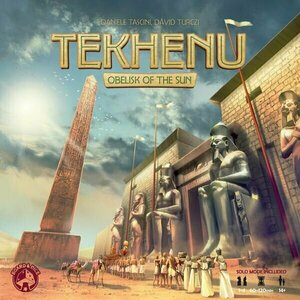
Tekhenu: Obelish of the Sun
Tabletop Game
Four millennia ago on the eastern bank of the Nile river was laid the foundation of the Temple of...
Matthew Krueger (10051 KP) rated The Manhattan Project: Energy Empire in Tabletop Games
Feb 22, 2021
Players sit in the roles of countries trying to develop industry and energy production over a period of time roughly from the end of World War II to the present day. Throughout the game, players will construct buildings, power plants as dice, and manage the pollution in their environment with the aim of scoring the most points.
To begin play, the main board for Energy Empire is seeded with starting Building cards. These are divided into three different sectors: Government spaces, Industry spaces, and Commerce spaces. A set of pollution tokens, depending on the number of players, is also stacked on a track as the game timer.
Once the game begins, it flows continuously without rounds. Each player chooses, on their turn, to take a Work Turn or a Generate Turn.
Work Turn- During this type of turn, players must place a single worker on the main board on one of the spaces which represent activities and resources to collect. For example, this may be gaining science, steel, or purchasing oil. Afterwards, depending on which sector the player placed their worker, they can activate any previously purchased buildings, assuming they have enough workers and/or energy. Players can also activate their nation card and move up on the United Nations track, which is a pure competition for end game points. Energy is also used if a player wishes to place a worker on a space occupied by another worker. The player must place additional energy under the worker until their placement stack is larger than any other already placed.
Generate Turn: This type of turn represents the player resetting their work potential for a new set of placing workers. They do this by first potentially collecting an achievement which represents end game points for a variety of goals. They then recall any workers to their Player Mat and discard all Energy tokens. Players can also spend any oil resources to gain oil power plant dice. Finally the player rolls any or all power plant dice they have. This might include Solar/Wind (green dice), Hydro Power (blue dice, limited to one per player), Coal (black dice), and Nuclear (yellow dice). The resulting number of lightning bolts on the dice are delivered as energy tokens to the player. If a clean energy source rolled the highest cardinal number, the player does not collect pollution. If coal, oil, or nuclear dice resulted in the highest number, then the player places a single pollution token into their environment. Players continue this process one after another until a predesignated number of pollution tokens are removed from the game. Players get one final turn and then points are tallied. Players receive points for keeping their player mat free of pollution, building power plants, the United Nations track, and various points for each building constructed.
The most engaging part of the game and the main reason to seek it out, comes from the theme of global power intrigue. The building cards show off the exceptional art in the game.
Manhattan Project: Energy Empire Cards
The global impact cards for the first half of the game are green with a milder impact. Once they go red, prepare for some serious negative events. On top of this theme, the actions associated with everything in the game fit just right. The concept in game actions connect directly to the theme concept. In addition, the country actions to move up on the United Nations track also represent the tone and success formulas for those countries. The mechanism for rolling dice to gain energy and how much pollution is delivered feels just perfect given the competing goals of clean environments and high energy production.
The worker placement mechanism itself (largest stack among existing workers) is not new, but it is just the right mechanism to promote the overall feeling of energy competition. Choosing the space on which to place a worker is highly engaging and the choices tense to maximize efficiency. It is easy to connect with both strategy and tactics in this game.
Even with this engagement, it is also easy to see optimal routes for gaining points assuming opponents follow their strategies. It’s not “easy”, but it is possible to not even worry about opponents blocking a particular path to victory with low numbers of players.
Its a excellent work placement game. One i highly recordmend getting and play.

CIBC FirstCaribbean Mobile
Finance
App
Bank wherever and whenever you want with the CIBC FirstCaribbean Mobile App! With this app, you can...

MoneyCoach Plus - Expense Tracker, Bill Manager
Finance and Productivity
App
Did you know that with MoneyCoach Plus you can save up to 1.000$ per year with by optimizing your...

Strife: Legacy of the Eternals
Tabletop Game
Once more, conflict rages across the world of Aerim. You are one of the Eternals, a group of...
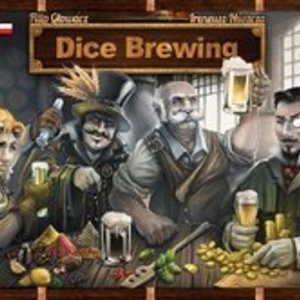
Dice Brewing
Tabletop Game
Dice Brewing is a dice-building game in which you manage resources and brew beer to become the beer...
Boardgames BeerGames DiceGames BrewingGames 2014Games Thirstygames
